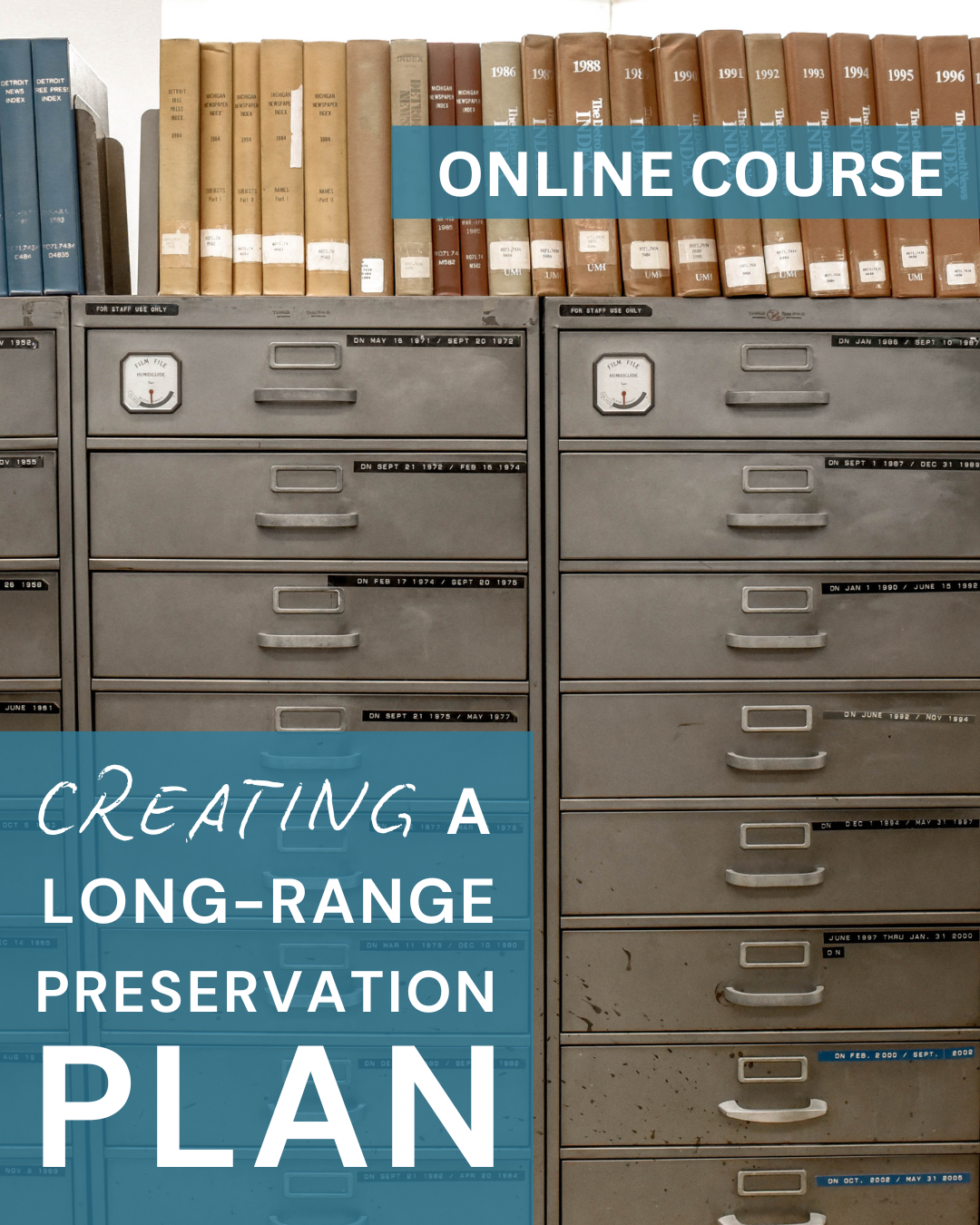
Each September, National Preparedness Month reminds us of the importance of being proactive about emergencies, not just in our homes, but also in our institutions. For libraries, archives, museums, and historical societies, preparation is more than fire drills or flood kits. It’s about preserving our collections, the very core of our missions, before a crisis occurs.
This year, we invite you to turn that intention into action by enrolling in our upcoming online course, Planning for Preservation: Creating a Long-Range Preservation Plan, running September 22 – October 3, 2025. Whether you’re new to preservation or need a refresh, this free, self-paced course will walk you through the essential steps to create a long-range preservation plan that works for your institution.
Why a Preservation Plan Matters for Preparedness
Preservation planning helps institutions take a thoughtful, strategic approach to caring for collections. It’s more than a wish list; it’s a practical, actionable document that sets priorities, assigns responsibilities, and identifies the resources you need to meet your goals.
In the face of unexpected disasters, institutions that already have a preservation plan in place are far better equipped to:
- Advocate quickly for emergency resources
- Prioritize recovery efforts based on risk and significance
- Reduce overall damage by having preventative measures in place
Imagine this scenario: A historic house museum has been slowly working toward better collections care but hasn’t had the time or staff capacity to tackle everything at once. Then, in the middle of a rainy fall weekend, the roof begins to leak, right over a storage area that houses rare photographs and paper records.
Because staff had recently created a preservation plan, they didn’t panic. The emergency procedures they had developed were easy to follow, and they had already identified which collections were most vulnerable. They were able to quickly move at-risk items, notify stakeholders, and begin recovery. Just as critically, they were able to reassess priorities with clarity. Since their plan outlined all preservation goals for the coming years, they knew exactly which projects could be paused or deferred to redirect attention and funds to the emergency response.
The preservation plan didn’t just help them react; it helped them recover with confidence and stay on track for long-term sustainability.
What You’ll Learn
Throughout eight short, engaging modules, Planning for Preservation guides you through building a framework for your preservation efforts. You’ll walk away with:
- A better understanding of how to assess collection needs
- Tools to write clear, achievable goals and strategies
- A working draft of your institution’s preservation priorities
- A timeline for action, including short- and long-term goals
- Tips for advocating internally and externally for support
We’ll also share worksheets and templates you can adapt to your institution, and you’ll have access to a live Q&A session to ask questions and get feedback.
Tip from the Course: Break It Down
One key lesson participants love is how the course helps demystify big preservation goals. Instead of “Digitize the photo collection,” which can feel overwhelming, the course walks you through breaking it down into bite-sized strategies like:
- Inventory the photo collection
- Assess current housing and storage conditions
- Research scanning equipment or vendors
- Develop file naming conventions and workflows
By identifying realistic, sequenced steps, your plan becomes something you can actually do, not just have on a someday to-do list.
Advocacy & Preparedness Go Hand-in-Hand
Being prepared also means being able to communicate the value of preservation work clearly and confidently, especially in times of crisis or when advocating for resources. During National Preparedness Month, we’re reminded that planning doesn’t stop at emergency supplies or disaster response. It also includes making the case for why collections care matters. In the final module of this online course, you’ll learn how to tailor advocacy messages for different audiences, from board members to volunteer docents, and connect your preservation goals to your institution’s broader mission. When a storm hits or funding gets tight, having a well-articulated preservation plan can make all the difference in rallying internal and external support.
Register Now!
Registration is free, and there’s still time to join. The course is asynchronous, so you can complete the modules at your own pace during the two-week period. Join cultural stewards across New York State in building a stronger foundation for collections care.
Course Dates: September 22 – October 3, 2025
Learn more and register: https://www.dhpsny.org/education